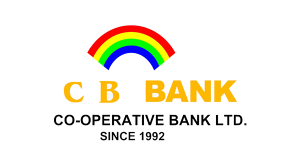AVAILABLE FUNCTION OF PUBLIC TRANSPORTATION
Passenger Counting
Passenger counting in buses is a feature that allows for the automatic counting of passengers as they board and exit the bus. It can use various technologies such as infrared, ultrasonic, or image-based sensors to detect and count passengers as they pass through the bus doors. This information can be used for various purposes such as monitoring passenger traffic and determining the occupancy of a bus in real-time, which can be helpful for scheduling, route planning, and capacity management. The passenger counting system can also be used to generate reports and analytics on passenger flow and usage patterns, which can be used to improve the overall operation and efficiency of the bus system.
Video Monitoring
Video monitoring for passenger buses is a feature that allows you to install cameras inside the bus to record and monitor the passengers and the bus driver. The cameras can provide live or recorded footage that can be used for security and safety purposes, such as identifying and deterring criminal activities or monitoring driver behavior. Video monitoring can also be used to ensure compliance with safety regulations and to assist in incident investigations. Additionally, it can be used to provide a higher level of customer service, by monitoring to ensure that passengers are comfortable and safe. It can also be used for training and evaluation of drivers.
Auto Announcement
The feature allows the bus to automatically announce the next stop or destination to the passengers. The system uses GPS location-based technology to determine the bus’s location and match it to a pre-recorded or generated announcement. The announcement can be made in multiple languages depending on the requirements. This feature can be helpful for passengers who are unfamiliar with the route or are unable to see the bus’s destination sign. It can also be used to provide information about the bus’s route or schedule, or to make announcements about delays or other important information. This feature can help improve the overall passenger experience and make the trip more convenient and comfortable for the riders.
Driving Behavior
With the Driving Behavior feature, fleet operators can monitor and improve the driving performance of their drivers. The feature can detect harsh acceleration, braking, cornering and speeding, and provide in-vehicle coaching to improve overall fleet safety. Additionally, the feature can analyze driver performance to improve fuel economy and reduce maintenance costs. By using the reward and punishment system, the fleet operators can improve the overall performance of their fleet.
Driver Identification
The driver identification system uses various methods such as RFID, NFC, and biometric to identify the driver. This allows for accurate tracking of driver’s hours, and helps to ensure compliance with regulations. Additionally, it can also be used to monitor and improve driver performance by tracking key performance indicators such as speed, acceleration, braking, and fuel consumption. Overall, the driver identification system is an important tool for improving fleet management and ensuring the safety of drivers and vehicles.
Fuel Consumption
The Fuel consumption monitoring system allows fleet operators or owners to track and control the fuel usage of vehicles, heavy machinery, generators, and ground tanks. It can help to reduce fuel costs, which are often a significant part of total fleet expenses. With our fuel monitoring solution, it is possible to save up to 30% of fleet financial expenses by eliminating fuel misuse and increasing the ROI of your business. The system allows you to identify the actual cost of every single trip and working hour.


































